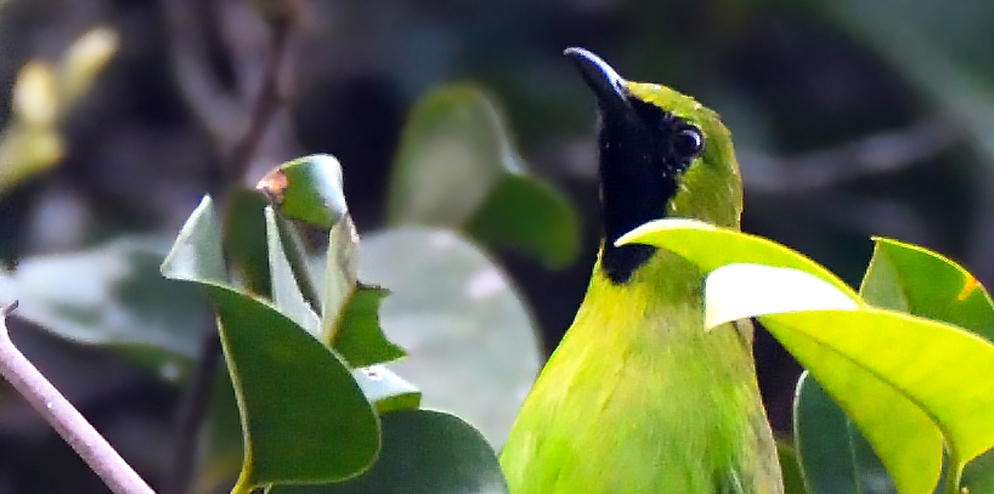September 14, 2018
Meet the Greater Green Leafbird (Chloropsis Sonnerati), a bird which belongs to the Chloropseidae family.
Besides Indonesia, where it is known as Cica-daun besar, this bird is also native to Brunei, Malaysia, Myanmar, Singapore and Thailand.
The Greater Green Leafbird is one of the 304 species of birds which have been identified in the Restorasi Ekosistem Riau (RER) area, where it is observed to be a resident species.
Like the Lesser Green Leafbird (Chloropsis Cyanopogon), the Greater Green Leafbird gets its name from its plumage, which is mostly green. The two species are difficult to distinguish, but the Greater Green Leafbird is slightly larger and bigger-billed. In fact, the Greater Green Leafbird is known as the largest leafbird species.
The two species are also more easily differentiated through the females, with the Greater Green Leafbird showing a strong yellow eye-ring and throat which are absent in the Lesser Green Leafbird.
Male Greater Green Leafbirds have a black mask enclosing the eye with a cobalt blue jawline flash, while females lack the mask and have a paler blue jawline flash.
This leafbird is known for the volume and clarity of its voice, typically emitting ascending ‘chee-zi-chee’ sounding whistles.

The bird inhabits subtropical or tropical moist lowland forests or mangrove forests, frequently visiting the forest edge and even rubber gardens. It moves quite noticeably at the canopy level, jumping between branches and flying from tree to tree. The Greater Green Leafbird moves around in mixed flocks with other species including drongos, broadbills, tailorbirds, babblers and bulbuls.
The Greater Green Leafbird often visits fruiting fig trees for food, but also eats insects and small invertebrates.
Leafbirds use fine stems, leaf parts and rootlets to construct open cup-shaped nests, which are typically placed on the ends of branches. During courtship, the male allows the female to snatch insects that it has on its bill. Incubation of eggs usually lasts about 14 days, and is carried out by the female alone, while the male feeds her.
Up until 2012, the Greater Green Leafbird held a Least Concern (LC) conservation status issued by the International Union for Conservation of Nature (IUCN).
However, it is today classified as a Vulnerable (VU) species, meaning it is a species with a very high risk of extinction, with a current population size of fewer than 1,000 individuals.
The Greater Green Leafbird is often trapped for trade, with the number of individuals observed at bird markets in Indonesia to have increased dramatically in recent years. Recently published regulations in Indonesia included leafbirds in the list of protected species.
The species is sought after because it is capable of learning the song phrases of other bird species, and is therefore viewed as a desirable entrant in competitive bird singing events held in the country.